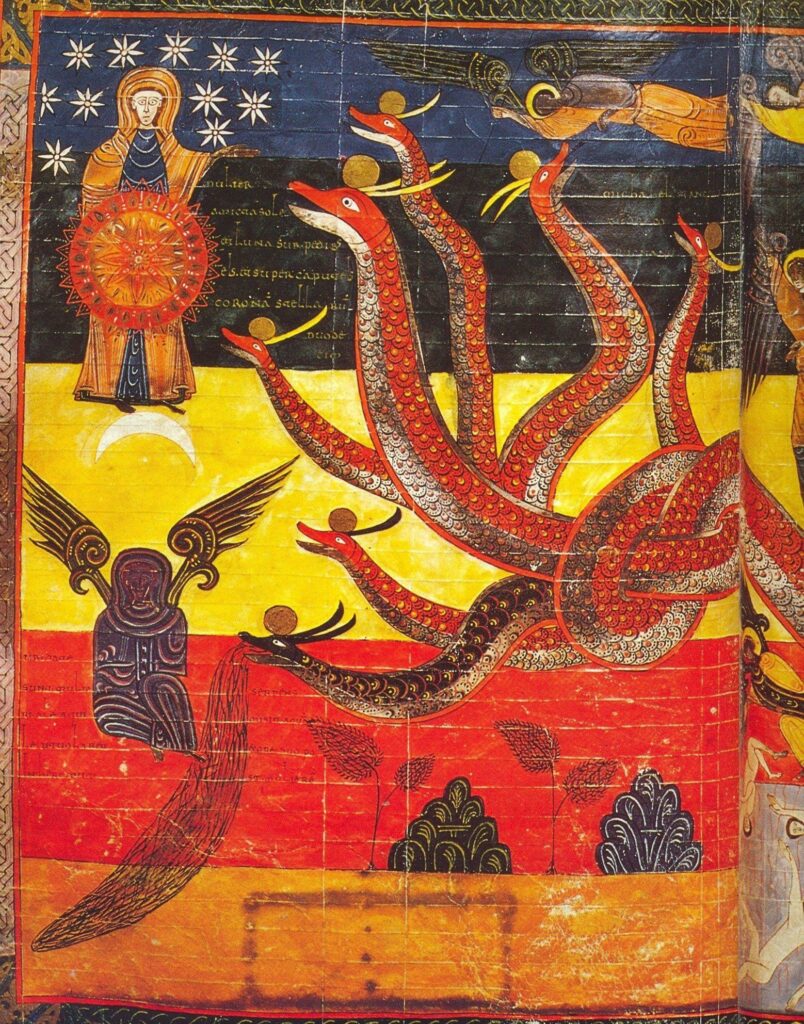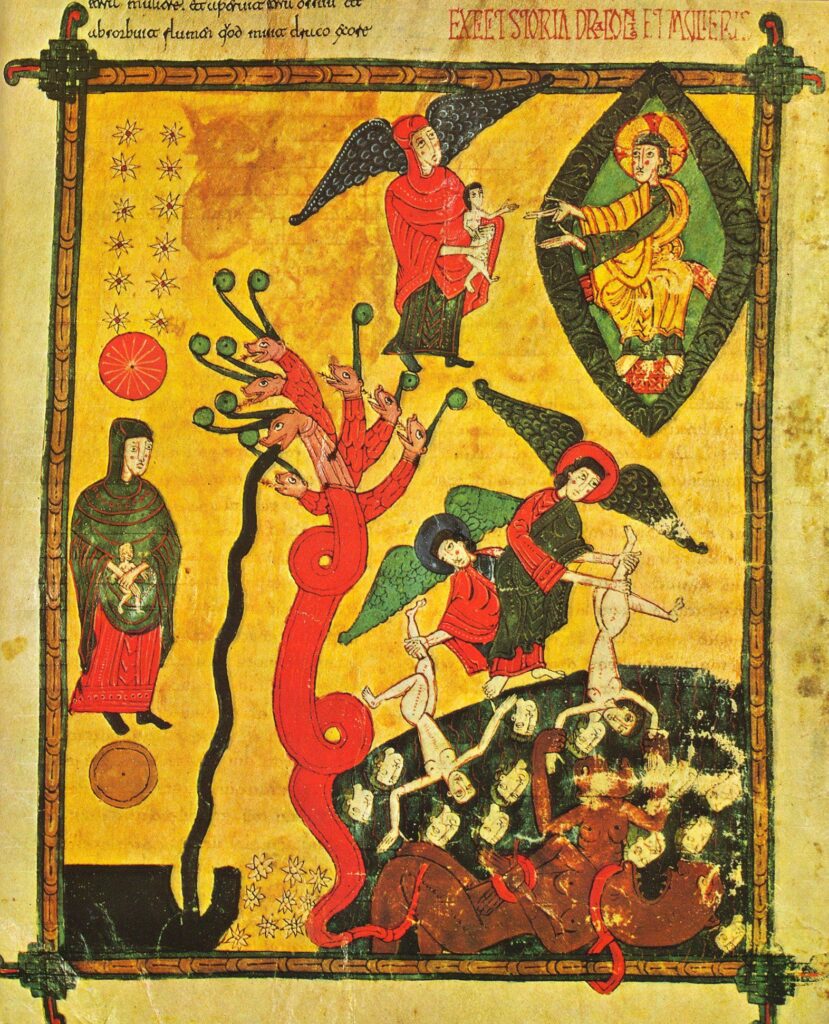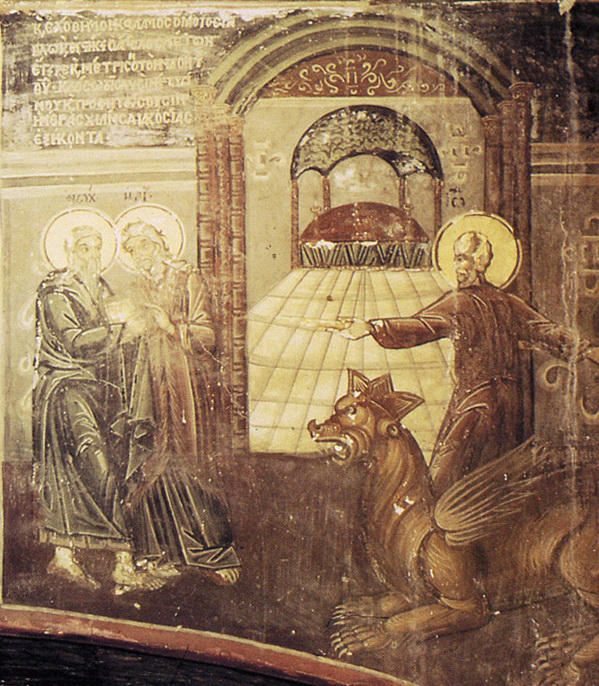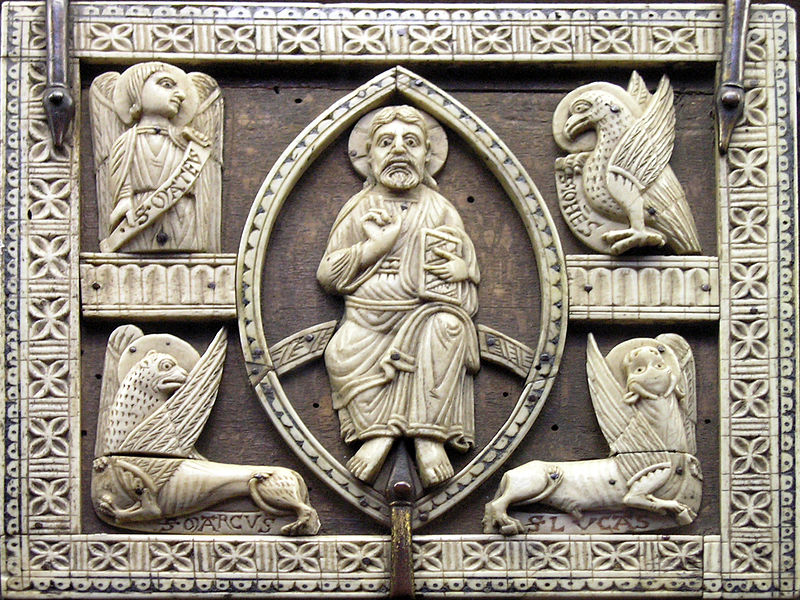
A great sign appeared in heaven: a woman robed with the sun, with the moon under her feet, and a crown of twelve stars on her head. She was with child and she cried out in her pangs of birth …. Then a second sign appeared in heaven: a great red dragon with seven heads …. (Apocalypse 12:1-6)
The woman clothed with the sun is one of my favorite characters or episodes in the New Testament. In the earliest commentaries, she is understood to be the Church, the New Israel, and the baby she gives birth to is the new Christian–at this period, typically an adult–who emerges newborn from the baptismal font. The red dragon with seven heads is the Roman imperial system who attacks the Church and slays the martyrs. The woman and her baby–the Church and the newly baptized–escape to safety in the wilderness, which is where the early ascetics and first monastics fled to pray and fast.
One of my favorite patristic texts–one of the first I ever read in its totality, as a freshman in the Sterling Library at Yale–is The Banquet by St. Methodius of Olympus. The Banquet is the one of the first and is the most extensive of the early Christian discussions of the woman clothed with the sun.
In the third century, commentators begin to see the woman clothed with the sun as the ever-virgin Mother of God who gives birth to Christ. They are attacked by Herod and flee to safety in Egypt. The importance of this interpretation of the Mother of God grows in importance as she becomes a model for the ascetics and monastics in the desert-wilderness, usually in Egypt but also near the Jordan River.
The image of the woman clothed with the sun becomes associated with the “falling asleep” (the Dormition or Assumption) of the Mother of God. She is taken into eternal glory in the Kingdom of God because she is the Mother of God who gives her flesh to the Word. Everything human about the Word-made-flesh came from her; his DNA is her DNA. She is the first believer to be taken into glory as a pledge of what all members of the Body of Christ will experience.
The woman clothed with the sun is one of the most frequently depicted figures in the New Testament. If the Apocalypse is a multi-valent and many layered text, the woman clothed with the sun is one of the most multi-valent and many layered figures in the New Testament.




